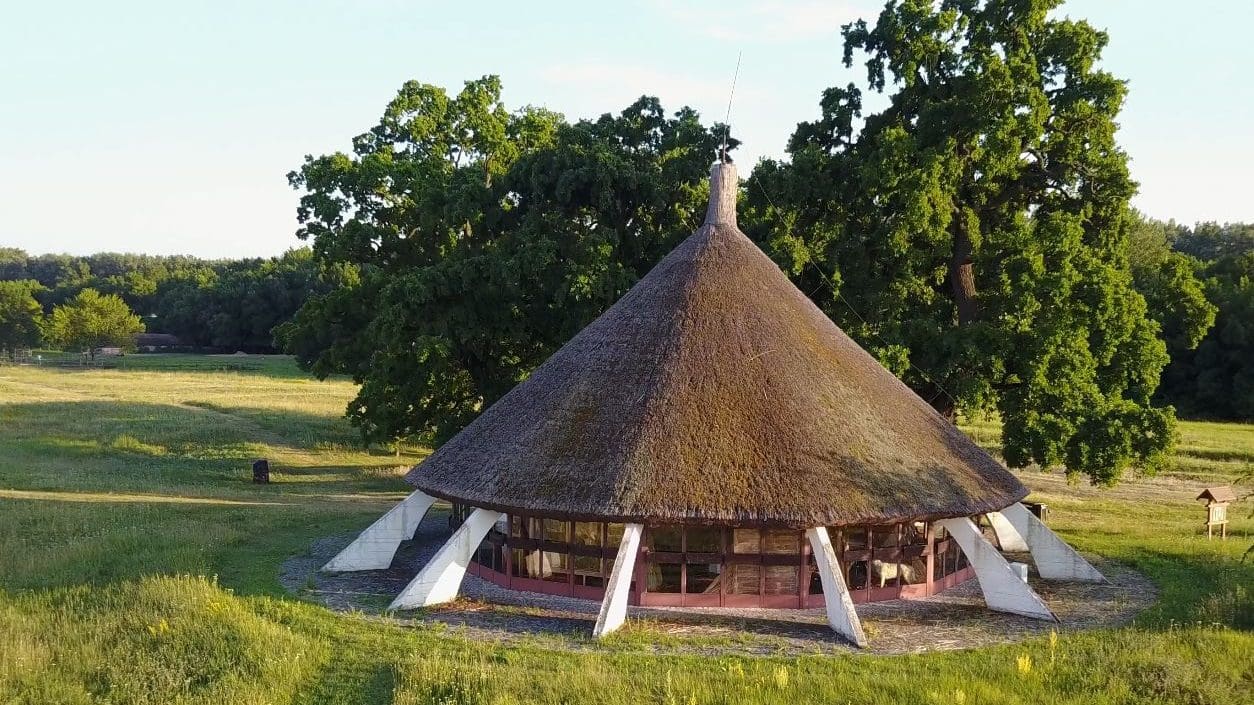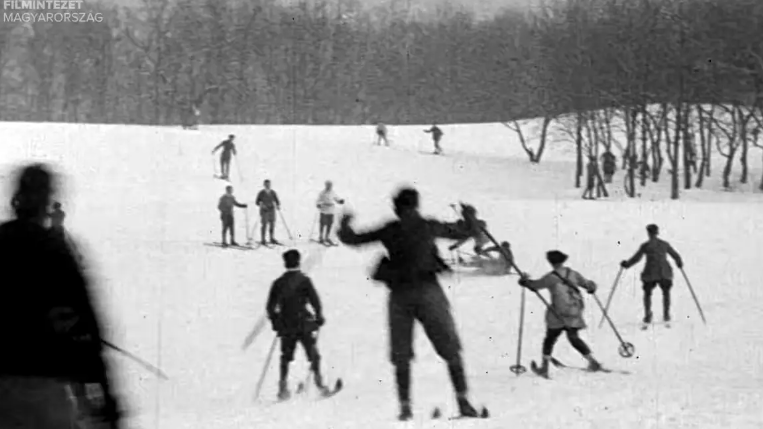Hungary’s rich historic heritage is widely acknowledged. However, it is important to remember that the country is more than just its picturesque capital—internationally lesser-known regions within the country also possess equally captivating cultural heritage that is worth exploring.
One of these regions is Kunság, located in central Hungary. It historically held a uniquely significant position, as originally it was established to shelter tribes of non-Hungarians, namely the Cuman (Kun) people. Assuming that the term is applicable to medieval history, the region’s establishment as an ethnic autonomy happened after these Turkic-speaking, steppe-roaming people came to Hungary seeking refuge from the Mongol invasion which Hungary soon also fall prey to.
The Cuman identity does not exist any longer as a separate identity, as the Cumans merged into Hungary over time. However, interestingly enough, notwithstanding Kunság’s medieval origin, the region maintained its privileged status and was amalgamated with larger and less autonomous counties only in the late 19th century. Nowadays, despite its complete and full incorporation, Kunság still preserves remnants of this fascinating past, adding to its already remarkable landscape, and making it an enticing destination for exploration. Kunság today is just as rich with a unique historical heritage as beautiful in its nature.
The History of Kunság
The first time Kunság appeared on the map as a distinct administrative unit was in 1246. At the time, directly after the Tatar invasion, King Bela IV of Hungary devoted considerable efforts to rebuilding the ravaged country, and therefore decided to call back the Cumans to settle in Hungary. At their first arrival to the country in 1239, the relationship between the Hungarian locals and the Cuman migrants, seeking refuge from the force that invaded Hungary too, soon broke down.
Due to their nomadic lifestyle, pagan habits, and certain social conflicts that arose, the Cumans were forced out of the country, ravaging and pillaging on their way out. However, learning a tough lesson from the recent invasion and recognising the importance of enhancing Hungarian defence capabilities, Bela IV invited the Cumans back to recolonise the depopulated territories of Hungary between the Danube and the Tisza rivers. In accordance with the agreement, the Cuman tribes (Olás, Csertán, Kór, Borcsol, Kondám, Honcsuk, and Jupogó) offered military services in defence of Hungary, and were granted the privilege of maintaining their national framework within their newly established settlements. The agreement between the King and the tribes strongly emphasised the requirement of fully and permanently converting to Christianity, which the Cumans agreed to.
As per their nomadic customs, the leaders of the Cumans participated in ceremonial oath-taking, pledging their allegiance to the King of Hungary. They vowed to serve as guardians of the Hungarian land, defending it from the Tartars and any other potential adversaries. Else than enchanting the defence of the country, the Cumans proved beneficial for the war-torn medieval Hungary from a different perspective as well. Due to the Cumans’ nomadic lifestyle, the tribes had the necessary skills to turn the Great Plain into one of Europe’s most important animal production zones. From the 15th century onwards, Hungary could greatly capitalise on this, especially during the surge in cattle demand, resulting in substantial benefits for the country.
The culmination of Cumans’ distinct status reached its peak in 1279, when
King László IV, a half-Cuman himself, granted them autonomous settlements.
After the peak, however, the Cuman ethnolinguistic identity gradually merged into Hungariandom. By the 15th–16th centuries, Cuman territories differed little from the rest of the country. The Cuman language went extinct completely in the 17th century, albeit, quite surprisingly, some studies indicate that the Lord’s Prayer in Cumanian was utilised as a teaching text in schools located in Kisújszállás and Karcag until 1948.
Over the centuries, the Cumans and their descendants assimilated into the Hungarian population linguistically, religiously, and culturally. While the Cuman cultural identity did not serve as a significant mobilising factor, the autonomy and distinctive privileges enjoyed by the Kunság region did indeed serve as a mobilising and unifying force for the peoples of the region. During the Habsburg rule, the Teutonic order was given a contract to settle in the region, which endangered the privileges granted centuries earlier to the region. As a result of the disputes, the Cumans flocked under the banners of Rákóczi during the 1703–1711 War of Independence. Soon after the loss of the struggle for independence as a punishment for participation in the ‘rebellion’, the region’s self-governance was terminated. 30 years later, however, it was restored yet again by Maria Theresa. This time, the region’s self-governance lasted for another 150 years. It was terminated completely only in 1876,
integrating the region into the newly established county system of Dualist Austria-Hungary that symbolically finalised the Kunság’s centuries-long process of assimilation into Hungary.
Nowadays the historical land of Kunság is divided between the counties of Bács-Kiskun and Jász-Nagykun-Szolnok, which names attest to their unique history. The territories of both counties roughly correspond to the territories held by the historical entities of Kiskunság (Little Cumania) and Nagykunság (Greater Cumania), which were subdivisions within the broader Kunság region. The subdivisions emerged due to how the Cuman tribes initially settled, with stripes of non-Cuman inhabiting lands in between the two main Cuman lands. The region’s landscape itself appears to be flat and not very capturing, with the exception of the distant presence of the 5500-years old grave mounds of the Yamnaya culture, referred to as ‘kunhalom’ in Hungarian—a fascinating historical site of the region, despite having nothing to do with the Cumans, rather revealing the story of ancient Indo-European migrations. However, this impression is misleading, as an amazing nature spot and a UNESCO biosphere, Kiskunság National Park is situated in that very location.
Flag and Coat of Arms of the ethnic #Cumans from the #NorthCaucasus who settled in Hungary, #Kunság. pic.twitter.com/TfGDstivKi
— Лъытэн Хьаткъо ⋰Ẍ⋱ (@Sausruqo) May 15, 2022
The Natural World of Kunság
The Kiskunság National Park, the second oldest national park in Hungary, was established on 1 January 1975, shortly after the Hortobágy National Park. The main philosophy behind its establishment is actually deeply intertwined with the region’s vibrant history—
to preserve the established harmony in the centuries-old coexistence between people and nature.
Throughout its history, the region has undergone profound transformations, including a period of Turkish occupation, the establishment of extensive animal husbandry practices, the regulation of the Danube River, and the flourishing of local viniculture—everything bears its mark on the landscape and the biological balance, which highlights the importance of protecting the area.
The Kiskunság National Park stands out from other national parks due to its unique configuration of fragmented natural habitats—rather than being one contiguous territory, it is a mosaic composed of nine separate territories that cover all the habitat types found in the Kiskunság region. Spanning an area of 30,628 hectares (7118 square miles) at its establishment, the National Park has expanded significantly with the inclusion of additional protected areas, now encompassing over 50,000 hectares (193 square miles) in total. On these lands, the Kiskunság National Park is harbouring over 12,000 recorded species. This is a testament to the region’s biodiversity. Out of these species, lower plants contribute a remarkable diversity of 1,800 species, while higher plants are represented by 1,300. The park’s vibrant ecosystems support an abundance of animal life, with
the number of recorded animal species exceeding 8,800.
This remarkable wealth of flora and fauna showcases the park’s significance as a thriving ecosystem and highlights its role in preserving and protecting the region’s natural heritage.
Since the park’s underlying concept is showcasing the importance of human influence on the natural landscape, the Kiskunság National Park also holds exhibitions about the region’s culture. The Shepherd Museum in Bugac provides information about the old pastoral culture of the Hungarian Puszta, providing insights into the way people used to live there in the past. In addition, the open-air reconstructed village from the Árpád Era can give an immersive insight into what the Hungarian Conquest-era settlements looked like, based on the archaeological evidence from the territory. Other sites worth visiting from the region include the Csólyospálos Geological Site and the House of Nature, dedicated to the history of nature conservation in Hungary, the characteristic features of the region, as well as its traditional professions.
Despite not being as well known as other popular tourist destinations such as Balaton, Budapest, or Visegrád, the region of Kunság is an incredible place that offers a rich historical background and bright natural environment. With its off-the-beaten-track appeal, Kunság presents an excellent opportunity for travellers seeking unique experiences, while Kunság also has a good chance of finding its way into the hearts of international and domestic travellers alike.







